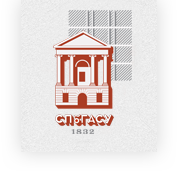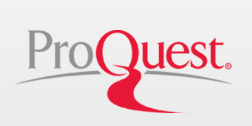




![]()
![]()
![]()
![]()


![]()
![]()


FOR AUTHORS
1. 來稿應包括封面頁和正文
封面頁包括題目(中英文)、作者(中英文)、作者簡介(中文,100字以內)、所屬單位(中英文)、通訊地址、電話和Email地址等。
正文包括題目、摘要(中英文)、關鍵詞(中英文)、引言、方法、結果、討論、結論和參考文獻等部分內容。(不要包含作者姓名、單位等作者信息)
來稿(包括圖表、參考文獻),以5000-8000字爲宜。
2. 題目、摘要和關鍵詞
題目簡潔明瞭,字數一般不超過30字。
摘要應包括目的、方法、結果和結論四個部分,其中中文摘要約300字,英文摘要約600-800字。
關鍵詞3至7個(中英文)。
3. 正文
正文是文章的主體部分,應內容充實、邏輯清晰、表述規範。
請使用法定計量單位、符號以及標準化、規範化的名詞和術語。
中文稿件模板:https://erytis.com/web/assets/images/home/erytis+word_template+CN.docx
所投稿件需保證文章版權的獨立性,文責自負,勿一稿多投。
Disclosure instructions
Authors must disclose the use of generative AI and AI-assisted technologies in the writing process by adding a statement at the end of their manuscript in the core manuscript file, before the References list. The statement should be placed in a new section entitled ‘Declaration of Generative AI and AI-assisted technologies in the writing process’.
Statement: During the preparation of this work the author(s) used [NAME TOOL/SERVICE] in order to [REASON]. After using this tool/service, the author(s) reviewed and edited the content as needed and take(s) full responsibility for the content of the publication.
This declaration does not apply to the use of basic tools for checking grammar, spelling, references etc. If there is nothing to disclose, there is no need to add a statement.
The below guidance only refers to the writing process, and not to the use of AI tools to analyse and draw insights from data as part of the research process.
Where authors use generative artificial intelligence (AI) and AI-assisted technologies in the writing process, authors should only use these technologies to improve readability and language. Applying the technology should be done with human oversight and control, and authors should carefully review and edit the result, as AI can generate authoritative-sounding output that can be incorrect, incomplete or biased. AI and AI-assisted technologies should not be listed as an author or co-author, or be cited as an author. Authorship implies responsibilities and tasks that can only be attributed to and performed by humans, as outlined in Elsevier’s AI policy for authors.
Authors should disclose in their manuscript the use of AI and AI-assisted technologies in the writing process by following the instructions below. A statement will appear in the published work. Please note that authors are ultimately responsible and accountable for the contents of the work.
Authors are asked to pay an article processing charge (APC) of $200 US dollars per processed paper.
Rejected articles are free of charge. There are no surcharges based on the length of an article, figures or supplementary data.
Waivers may be considered on a case-by-case basis, taking into account the quality of the research article and the authors' financial need.
At Erytis Publishing Limited, we are committed to upholding the highest standards of confidentiality in the handling of manuscripts. This means all details pertaining to a submitted manuscript, including its review status and the details of its review, are kept confidential. We do not publicize or comment on submitted or rejected manuscripts.
All participants in the publication process - including authors, reviewers, and editors - are expected to treat all communication with Erytis Publishing Limited as confidential. This includes correspondence with representatives from the journal, such as editors-in-chief, handling editors, and the content of reviewers’ reports, unless explicit consent has been received to share this information.
However, there may be instances where we need to share materials with relevant parties. This would be the case if there are allegations of misconduct and an investigation is required. In such instances, we would do so in compliance with our responsibilities to uphold the integrity of academic publishing. All parties are expected to respect this confidentiality policy and understand the important role it plays in the peer review and publication process.


